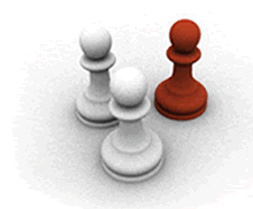|
“We need to change the culture!” It’s a cry often heard in strategy conversations – and yet changing an organisation’s culture is one of the most difficult strategic leadership challenges. It’s certainly not something that can be achieved merely through slogans, mission statements, edicts from the senior team or cascade briefings! The first part of the challenge is that it’s surprisingly difficult to describe an organisation’s culture. Everyone has a feel for it, but arguably it’s their own personal interpretation – and moving from a host of individual perceptions to crystallising the essence of these and achieving a shared understanding takes considerable effort. You have to peel back the layers from behaviours and values through to the beliefs and the implicit ‘taken for granted’ assumptions that underpin these. And as always with strategy development, it’s the language and conversations that are important - developing a way of communicating the ideas so that there is common understanding throughout the organisation. One model that’s very useful in helping to understand the many aspects that create and reinforce an organisation’s culture is the ‘cultural web’: What are the power structures in the organisation – how is management and influence actually exercised (rather than what the organisational charts say!) and what beliefs underpin these? How does the organisational structure work in practice – how do groups of people actually work together? What control systems operate? How are behaviours and results monitored and rewarded? What are the routines and rituals of the organisation – the established processes and social interactions? What stories are told and referred to in the organisation, who are the heroes - examples that illustrate what is held to matter? What symbols (formal or implicit) are used in the organisation – to describe the values, or indicate status? and at the root of these, what are the fundamental assumptions that people share (usually implicitly) about the organisation but which determine how they act?
Having analysed and found the words to capture the current culture, you then have to define what will replace it. To change an organisation’ s culture all the aspects of the cultural web need to be considered, and how they should change – in a consistent and integrated way that helps create and establish the new culture. And it is a journey that needs mapping out – how to change each aspect, and at what pace. Like all effective change, continually communicating, reinforcing and consolidating the new values and behaviours are vital. In my experience, it is the stories, symbols and rituals aspects of the cultural web that are often overlooked, and yet can be very powerful. They provide vivid examples of new values and behaviours that people can relate to, and can share with others in the vital conversations that help everyone to make sense of their organisation, what it stands for, and how they should conduct themselves. There’s a different way of looking at organisations, culture and change that I think provides a thought-provoking alternative perspective. The ‘traditional’ model of change in an organisation is of three stages – ‘unfreeze – move – refreeze’, taking the organisation from the current state to the new desired one. It’s based on the theory that the natural state of an organisation is stability, and so it strives to adapt and fit with its environment, and to try to re-establish equilibrium whenever this changes. But suppose this was turned on its head: an organisation is a way of dealing with change – it’s how a group of people with a common bond or purpose work out how to deal with their environment. In this ‘becoming’ perspective of organisations and change, an organisation is dynamic, continually evolving. Culture is being shaped and redefined all the time – all conversations and actions, and importantly others’ responses to these, influence what the organisation is and becomes. Looked at this way, it’s easy to see how individual actions and responses can affect the culture of an organisation – and hence the importance of stories, heroes and the social rules and rituals in defining this. But whichever theory you might adopt, what is clear is that changing the culture of an organisation is a journey that requires considerable strategic understanding and leadership – and not inconsiderable effort, however urgent the heartfelt cries in a strategy workshop! |




